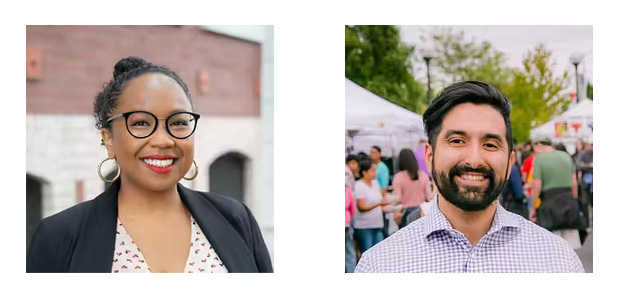Insights
Three Tips to Meaningfully Collaborate with Community Partners
Communications professionals are no stranger to working with community partners. Whether it’s supporting their mission or collaborating on an issue—community engagement is a crucial part of connecting with traditionally underserved audiences. However, it’s important to approach these relationships authentically to ensure you’re being the best partner possible.
Recently, Quinn Thomas invited two of our community partners—Urban League of Metropolitan of Seattle (ULMS) and Centro Cultural de Washington County (Centro Cultural)— to share their housing and health care work with our team. Much of our agency work supports clients in those sectors.

Zyna Bakari, public health program manager with ULMS presented Black Health Matters, a grassroots campaign to encourage open, transparent conversations within BIPOC communities focusing on COVID vaccinations. Juan Carlos González, communications and development director with Centro Cultural, shared their efforts to develop Casa Amparo, a new hub for transitional housing services and emergency shelter for displaced, low-income Latino/a/x families in Forest Grove, Oregon.
Read on for Zyna and Juan Carlos’ tips on how to meaningfully engage with community partners and the communities they reach:
Ask the community if you don’t know the answer
When collaborating with community partners, lean into their networks and leverage the relationships they’ve built to unearth authentic stories. For example, to create the most effective messaging for their Black Health Matters campaign, ULMS needed to find the real pain points regarding vaccines such as concern over side effects and previous negative health care experiences. Centro Cultural found the most effective way to communicate the benefit of their Casa Amparo work was to tell real stories, taking care to center a message of empowerment and strength.
If you’re interested in working with a community partner to reach a particular group, keep in mind:
- Leverage national studies and public data sets to build a stronger and fact-based understanding of the issues you are addressing, before reaching out to a partner.
- Supplement your research with ongoing conversations with community organizations and community members.
- Be open to partner feedback on the best communications channels or message positioning.
Through a combination of research and connection, your campaigns can validate the experience of those you are trying to reach and lead to stronger results.
Create a mutually beneficial partnership
Community organizations like ULMS and Centro Cultural are typically run by a team of passionate individuals that wear many different hats. While partnerships may be beneficial to furthering a community organization’s mission, it’s important to remember that these collaborations create additional work for the organization’s employees.
When reaching out to an organization about a partnership you should:
- Outline the partnership you have in mind and be open to the possibility that it may evolve depending on what your potential partner is looking for.
- Allow a few weeks for the organization to review the opportunity so they can ensure it aligns with their goals, to ask questions and share additional ideas.
- Provide content that the organization can use, but offer flexibility so they can customize it to match their unique voice.
As with any partnership, organizations should be appropriately compensated for their time and effort. Consider financial contributions to the organization, pro-bono services and volunteering.
Make the moment the movement
Fostering authentic relationships with community organizations is key. Although ULMS and Centro Cultural appreciate the support during Black History Month and Hispanic Heritage Month, partnerships should continue beyond those awareness months. Community organizations experience an uptick in donations during observance months. It can occasionally feel performative or as if companies are just checking a box when that’s the only time there is engagement.
Be intentional about staying in touch with community organizations year-round by:
- Attending their community events and getting to know their team members.
- Donating money or nominating the organization for potential grant opportunities.
- Following and engaging with their social media content.
- Participating in volunteer opportunities and getting involved.
- Subscribing to their newsletter and amplifying their content.
By maintaining an ongoing relationship with community organizations, you will understand their needs and can better identify organic opportunities for future collaboration.
This blog was authored by Sarah Ninivaggi, Deborah Warren and Ariana Gaspar.
